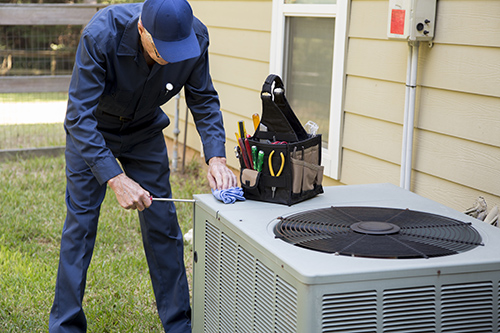
Improving a home’s cooling efficiency is valuable for several reasons. It reduces energy consumption, leading to lower utility bills for homeowners. Efficient cooling reduces strain on HVAC systems, extending their lifespan and reducing the need for repairs or replacements. Enhanced cooling efficiency promotes comfort and well-being by maintaining consistent indoor temperatures and air quality. Furthermore, it contributes to environmental sustainability by reducing carbon emissions associated with energy usage. Here are some tips for improving efficiency.
1. Duct Cleaning
Duct cleaning can significantly enhance your home’s cooling efficiency by removing accumulated dust, debris and allergens from the ductwork. Clean ducts promote better airflow, allowing your HVAC system to distribute cool air more effectively throughout your home. This improved airflow reduces strain on the system, resulting in lower energy consumption and decreased utility bills. Additionally, clean ducts help maintain indoor air quality by preventing the circulation of pollutants.
2. Replace the Air Filter
Clogged air filters are a common reason that your HVAC system may have reduced efficiency. The more dust and debris in a filter, the harder a system must work to pull air through the intake. The MERV rating of a filter also affects the efficiency of your system. Higher MERV filters can pull smaller particulates from the air, but they become clogged more quickly and even new, clean filters require additional power to direct air through the system. If you choose a filter that has a level that is higher than your system is equipped to handle, you will lose efficiency and cause premature wear. Because of this, it’s best to work with your HVAC professional to determine the right filter for your system.
3. Upgrade Your Thermostat
The best way to ensure that your home is always cool and comfortable is to update your thermostat to accommodate new technologies. Smart thermostats, programmable for personalized schedules, optimize cooling only when needed. Wi-Fi thermostats allow remote control, adjusting settings for energy savings. Digital thermostats provide precise temperature control, avoiding overcooling. Manual thermostats offer basic functionality but lack programmability. Each type of thermostat contributes differently to cooling efficiency.
4. Add Extra Insulation
Adding extra insulation in various areas of the home can significantly improve cooling efficiency. It’s typically best to start with the attic, a hot spot prone to heat buildup. Don’t forget to insulate floors above unconditioned spaces like garages or crawl areas. Insulate crawl spaces or basements to maintain consistent indoor temperatures. In older homes, it is equally important to insulate the walls. This extra insulation prevents hot outdoor air from seeping in and cool indoor air from escaping.
5. Install a Zoning System
Zoned HVAC systems leverage multiple thermostats and dampers to control temperatures independently in different areas of the home. This enables targeted cooling, directing airflow where it’s needed most, and reducing energy consumption. It also prevents overcooling in unused areas. Additionally, they can address temperature variations throughout the house, enhancing comfort levels. Whether it’s a single-zone system for specific rooms or a multi-zone setup for entire floors, zoned HVAC systems offer tailored cooling solutions. When used strategically, this improves cooling efficiency and lowers energy bills.
6. Get Rid of Air Leaks
Homeowners can tackle air leaks by sealing gaps around windows, doors and vents with weatherstripping or caulking. Addressing duct leaks is crucial as well; professionals can efficiently seal duct joints and insulate ducts in unconditioned areas. By reducing air leaks, cooling efficiency increases as conditioned air stays inside; this reduces the workload on the HVAC system. Additionally, professional duct sealing ensures thorough coverage and long-lasting results, preventing future leaks. It also enhances indoor comfort, reduces energy consumption and lowers cooling costs.
7. Use Ceiling Fans
Integrating ceiling fans with air conditioning permits higher thermostat settings, leading to reduced energy use. The ceiling fans boost home cooling efficiency by circulating air, creating a refreshing breeze effect and making occupants feel cooler. To optimize their effectiveness, homeowners should adjust ceiling fans to rotate counterclockwise during the summer months, pushing cool air downward. It’s also smart to tailor fan speeds to room temperature and occupancy for optimal comfort.
8. Be Smart With Window Coverings
Homeowners have several options for window coverings that enhance cooling efficiency. Installing cellular shades, also known as honeycomb shades, provides effective insulation by trapping air in their honeycomb structure. Reflective window films reduce solar heat gain by reflecting sunlight away from the windows. Adjustable blinds and shutters offer flexibility in controlling sunlight and ventilation. Heavy drapes or curtains with light-colored linings block sunlight and heat during the day and provide insulation at night. Exterior awnings and solar screens prevent direct sunlight from entering windows. Choosing the right window covering can significantly reduce cooling costs and improve indoor comfort during hot weather.
9. Use Energy-Efficient Appliances
Upgrading to an energy-efficient air conditioner with a high SEER rating ensures optimal cooling performance while consuming less electricity. Similarly, replacing old refrigerators, freezers and washing machines with Energy Star-certified models reduces energy consumption and heat emissions. Because they don’t produce as much heat as incandescent bulbs, energy-efficient LED light bulbs help keep rooms cooler. Investing in LED bulbs and energy-efficient appliances not only reduces utility bills but also minimizes environmental impact by lowering overall energy consumption.
10. Schedule Regular AC Maintenance
Regular AC maintenance significantly improves a home’s cooling efficiency. Cleaning or replacing air filters ensures proper airflow, enhancing the system’s performance. Clearing debris from the condenser coils and evaporator coils improves heat transfer, allowing the AC unit to cool more effectively. Tightening electrical connections and lubricating moving parts reduce energy consumption and prevent system malfunctions. Checking refrigerant levels and ductwork for leaks ensures optimal cooling capacity and distribution throughout the home. Addressing minor issues during maintenance prevents major breakdowns, prolonging the lifespan of the AC unit. Overall, scheduled AC maintenance maximizes cooling efficiency, improves indoor comfort and makes energy bills cheaper.
11. Invest in Better Indoor Air Quality
Investing in better indoor air quality improves a home’s cooling efficiency by ensuring unrestricted airflow throughout the HVAC system. Regular cleaning of air ducts and vents prevents blockages and allows air to circulate freely. Installing high-efficiency air filters traps dust, pollen and other contaminants, reducing strain on the system and improving airflow. Maintaining proper humidity levels prevents excess moisture from impeding cooling processes. Additionally, sealing gaps and leaks in the home’s envelope prevents hot outdoor air from infiltrating and interfering with cooling efforts.
12. Consider Using Smart Technologies
Smart technologies offer homeowners innovative ways to enhance cooling efficiency beyond traditional methods. Smart vents allow precise control over airflow in different rooms, optimizing cooling where needed and reducing energy waste in unused spaces. Smart blinds or shades automatically adjust based on sunlight intensity, minimizing heat gain while still allowing natural light. You can program Wi-Fi-enabled ceiling fans to operate at optimal speeds and times, complementing air conditioning efforts by promoting air circulation and comfort. Smart air purifiers remove indoor pollutants, ensuring clean air and maintaining HVAC system performance. Additionally, smart home energy management systems monitor energy usage and offer insights for optimizing cooling schedules and settings.
If you’re looking for different ways to improve your home’s cooling efficiency, Beyer Air Conditioning & Heating wants to help. We work on air conditioners of all types and also offer heating repairs, duct cleaning, sheet metal services, indoor air quality testing and so much more. Give us a call today to learn more about making your San Antonio, TX, home more comfortable and affordable with better cooling efficiency.



